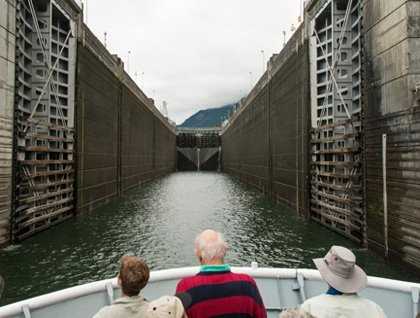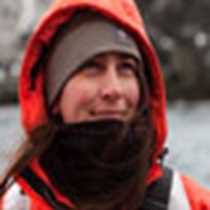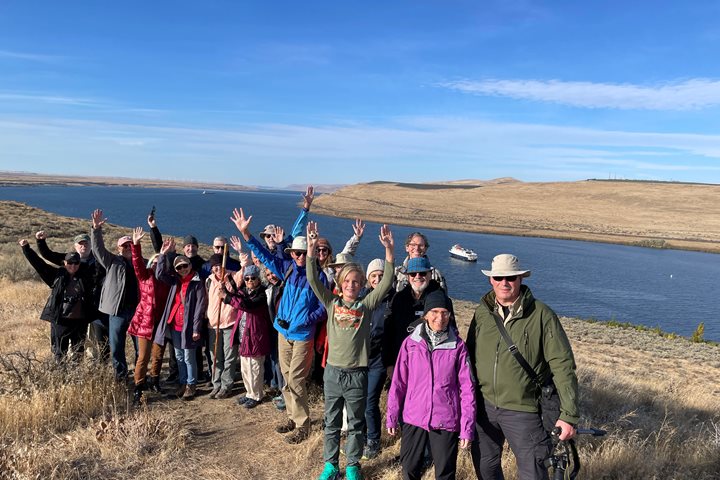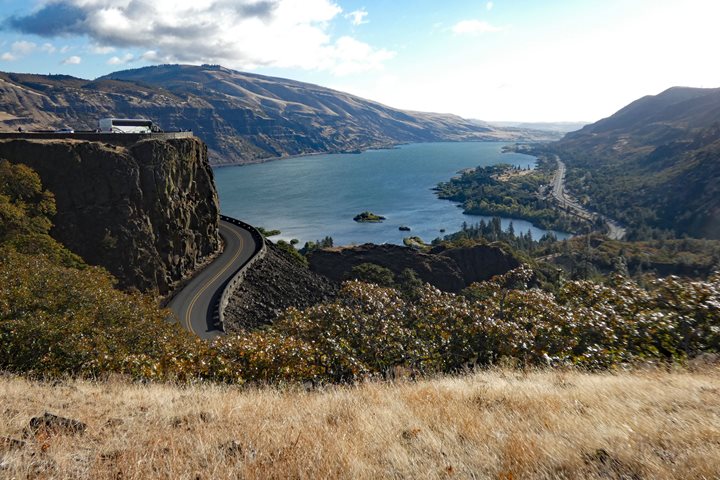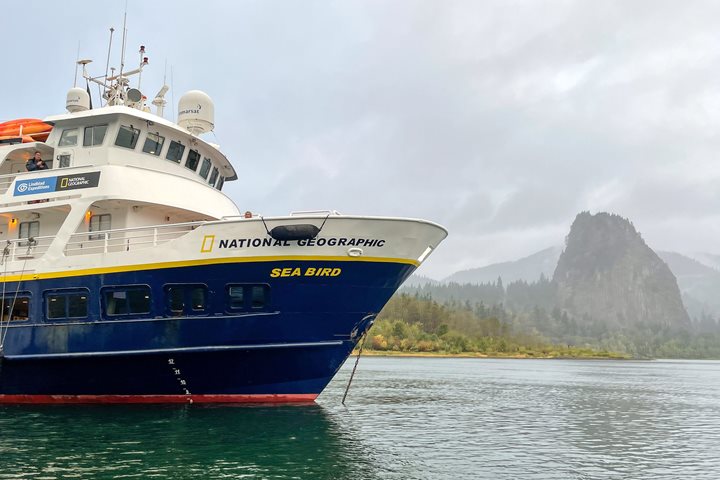The morning dawned foggy and cool as we traveled up the river. Low clouds scudded along the top of the gorge, shrouding the green cliffs in mystery. Tall, thin waterfalls slid down the Oregon side’s steep face. Bald eagles and osprey soared overhead and perched in nests atop old pilings. After breakfast we passed through a narrow stretch of river where fishing boats were thick in the water. Fishermen delighted us by pulling up huge salmon and showing them off to thunderous applause from the bow. We passed Beacon Rock, an 850-foot basalt outcropping alongside the river. Lewis and Clark camped in the shadow of Beacon Rock in 1805; today it is a state park with an elaborate trail climbing to its peak. Next was the Bonneville Dam, an engineering marvel completed in 1937. We floated 70 vertical feet up the lock complex, singing Woody Guthrie’s famous “Roll On, Columbia,” and docked in the small community of Cascade Locks.
The late morning was spent at a lovely set of waterfalls. Multnomah Falls, one of Oregon’s most popular sites, lived up to its reputation. Towering above a narrow bridge, Multnomah plunged down in front of us with a thundering roar. Some folks puffed up to the top of the falls; others headed to a neighboring set of waterfalls: Horsetail and Ponytail Falls. A half mile hike led us to the upper falls, where people could walk behind the falls and get a unique perspective of the Columbia. Thunder rolled down the gorge and rain pattered down, giving us a taste of fall weather, before yielding to beautiful sunny skies in the afternoon. Kite surfers pranced across the waves as the National Geographic Sea Lion parted the daredevil throngs and headed into the small town of Hood River.
Afternoon activities brought us out of town to Rasmussen’s Fruit Farm, a paradise of local crops. Colorful bins of Indian corn, eggplant, peppers and apples lined the open-air structure while jams, jellies, preserves and salsas garnished the tables. Next we stopped in at Wy’east Winery for wine tasting and a tour of the wine-making process. Guests picked grapes fresh off the vine and talked to the owners about the lifestyle and work of the winery. Others headed back to town for a stroll through the historic downtown district.
Recap tonight included a rather unusual performance by naturalist David Stephens on the various adaptations turkey vultures have for survival, among them urohydrosis and defense by projectile vomit. It sparked many an appetite for the fine dinner that followed. The evening concluded with an animated history talk by historian Jim Rawls.

